Beyond Freshpaint with Art Curator Masha Malakh. Part I: Young Israeli Artists
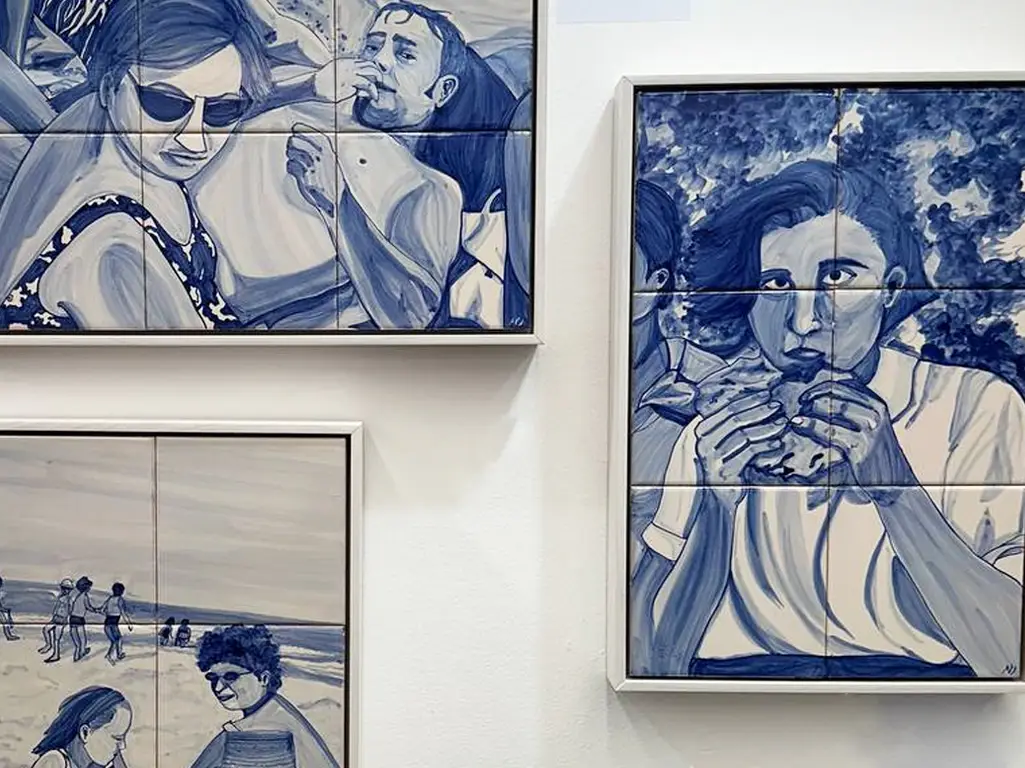
After the June events, it feels more vital than ever to talk about beauty as a kind of quiet resistance, a space to breathe, to reconnect. Although the 17th edition of the Freshpaint Art & Design Fair took place in May, its impact still lingers. This year’s fair offered so much depth, that it invites us to revisit it with fresh eyes.
At DI Magazine, we believe that some experiences deserve to unfold slowly. That’s why we’re launching a special series inspired by Freshpaint — a closer look at the artists, designers, and stories shaping the landscape of contemporary Israeli art.
I’m Masha Malakh, an art guide and curator, and long-time Freshpaint tour leader. In the coming features, I’ll be sharing my personal highlights and impressions from this vibrant event — and pointing you to where you can still see (and even collect) some of the standout works from the fair.
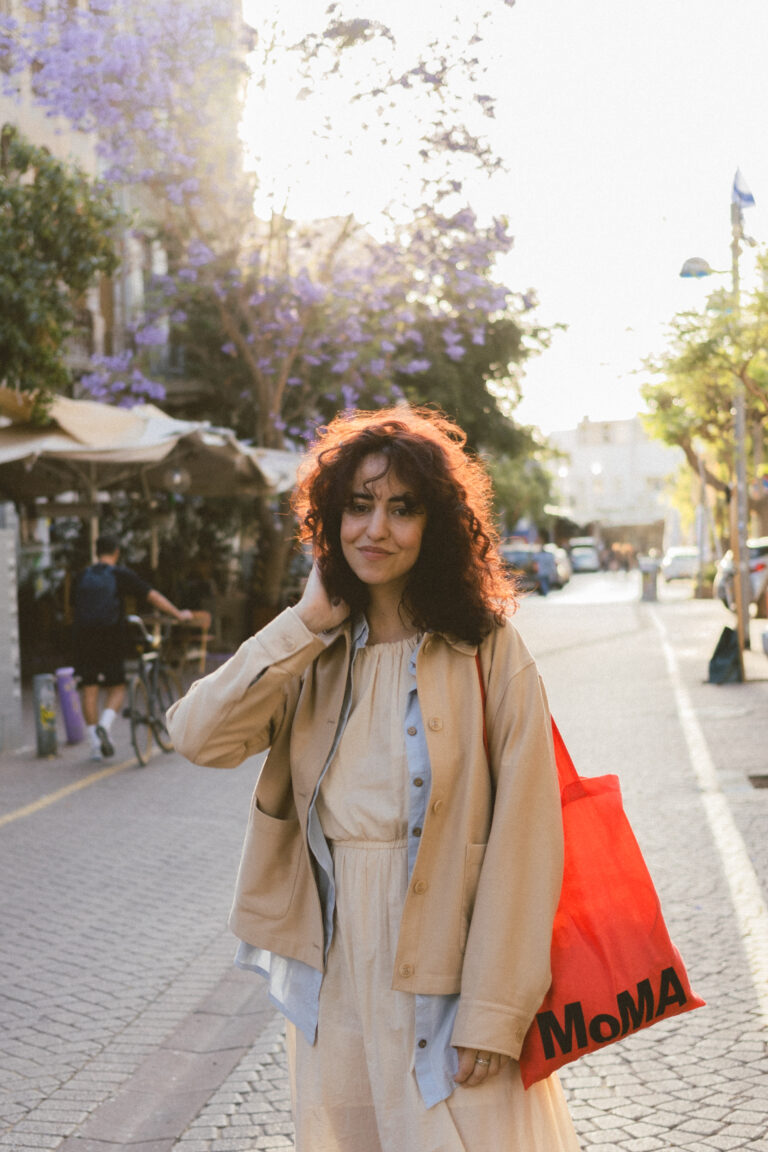
I always begin my tours with the Greenhouse — the fair’s section for emerging artists and, honestly, its brightest gem. So it makes sense to start our series here. This year, 48 artists were selected by the jury. The Greenhouse is a signature Freshpaint format — it hasn’t changed over the years, and that’s part of its charm. It’s always full of bold ideas, mixed techniques, and unexpected references — which I especially love to spot. Here are a few of my personal highlights.
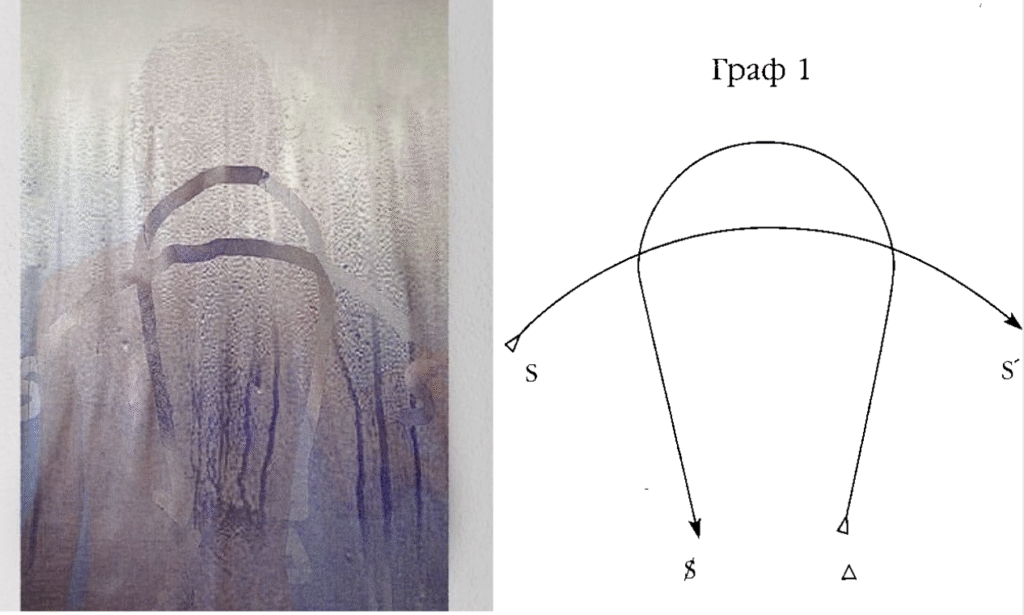
Take Liam Chambon, for example — a 23-year-old student at HaMidrasha — who somehow managed to sneak Jacques Lacan into the fair. Or rather, Lacan’s reflection.
Lacan once described human desire as a kind of movement — from a murky impulse deep inside us to something we can finally express, in words or in action. Chambon turns that idea into something you can see: his work uses fogged glass to trace the hazy boundary between Self and Other.
His figure hovers in that in-between space — half-seen, half-formed — like Lacan’s “mirror stage,” where identity first flickers into view but refuses to settle.
There’s more: Chambon also draws from the history of Israeli art and Bezalel’s tapestry traditions. Maybe that’s why his digital embroidery feels both ancient and futuristic — a quiet echo of something deeply rooted, refracted through a contemporary lens.
One of Chambon’s pieces also nods to Micha Bar-Am’s iconic West of the Suez Canal (1973) — a quiet echo of history through a contemporary lens.
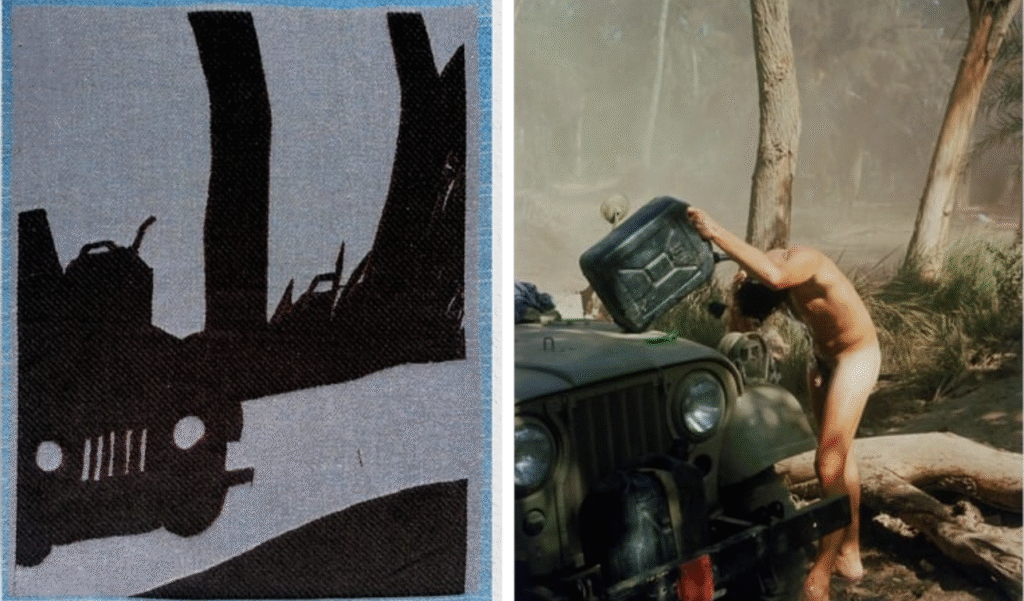
I was captivated by the work of Shirley Moneyhon, this year’s recipient of the Beeri Gallery Prize — a distinction awarded to one exceptional emerging artist from the Greenhouse section. As part of the prize, the artist will have a solo exhibition at the gallery next year.
At the fair, she showed a striking series of paintings and ceramic works. In one piece, she references Felix Nussbaum’s haunting 1943 Self-portrait with Jewish Identity Card. Moneyhon depicts herself holding a teudat zehut — a document that represents both protection and restriction. Her gesture places her at the tense intersection of identity, vulnerability, and affiliation with the state. It’s a deeply personal image, yet one layered with historical resonance: it speaks to a past in which official documents often signaled danger, and to a present where a passport still embodies contradiction — a symbol of belonging, or a threat of exclusion.
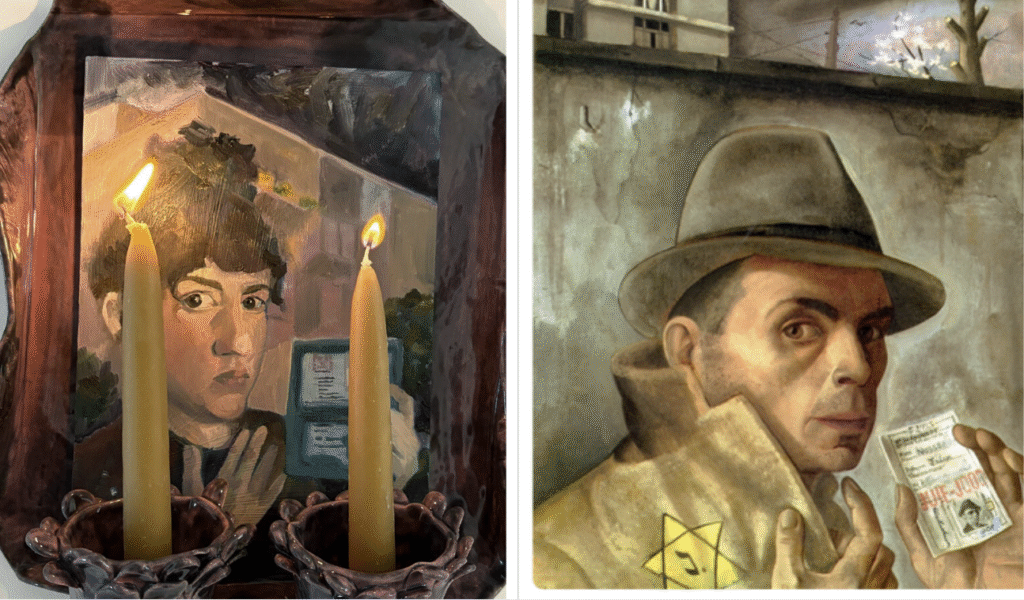
Young artists never fail to surprise — especially with the sheer range of techniques they bring to the table. Here are just a few standouts from this year’s fair:
Noam Zonshine hand-paints azulejo tiles — a traditional Portuguese craft — using old family photos from Israel’s early days. She grew up in Portugal, where tiles often carry historical narratives. Her process feels almost alchemical: she paints with pale lavender glaze, which transforms into deep cobalt blue in the kiln.
Yael Pasmanik works with linocuts based on casual phone photos collected over years. Her eye gravitates toward reflections in the glass towers of Tel Aviv and Ramat Gan — where cityscapes melt, stretch, and double themselves.
Elena Rotenberg-Ajoku uses airbrush techniques to dissolve the surface of reality. Her visual world floats somewhere between Renaissance religious scenes and the pixelated landscapes of video games.
- Kat Tolkovsky works with sgraffito — scratching through the surface to reveal hidden images. Strange flora, anatomical fragments, inner landscapes. Her focus is the maternal body, explored as something deeply physical, mythical, and childhood memory-filled.
- Eden Zornitser began working with chromogenic prints in the darkroom — part of a personal exploration of gender identity. In one powerful piece, she applied testosterone gel directly onto light-sensitive paper, trying to capture the physical and mental transformation of transition itself.
- Stav Rozental, at 33, began a series of “memory vessels” — ceramic jugs, one for each year of her life. Each is filled with drawings, fragments, existential musings. Only 16 were shown at the fair, but the full set is online — including a favorite: a jug etched with a recipe for Moroccan salad.
- Elia Bloch, a recent Bezalel graduate, showed a series titled A Place Pretending to Be a Home — blending glass with familiar domestic objects. The pieces feel quiet at first, almost decorative — until something starts to feel off. “It’s a home attacking itself — creating a sense of estrangement and unease within a familiar space. At first, the works don’t feel disturbing, but slowly they reveal themselves as surreal and threatening.” In the design pavilion, she also showed hand-blown glass lamps that looked like they were gently melting.
- Veronika Bernard, trained as a sculptor, found her way into textiles by chance — and never looked back. “It’s everywhere — even on the street,” she says. “I never worked with color before, and fabric gave me that freedom.” Now, it’s her main medium: soft, spontaneous, and endlessly expressive.
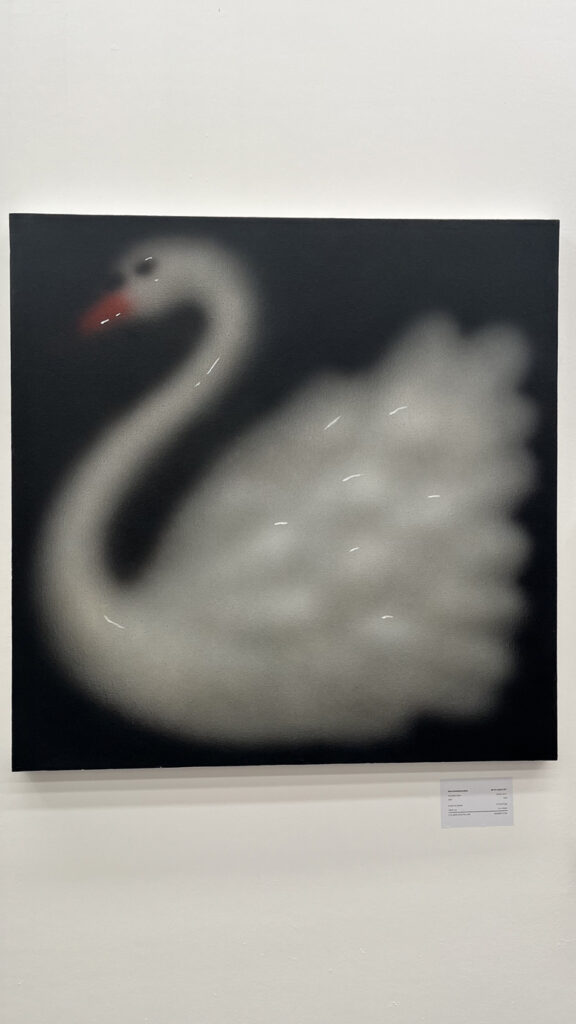
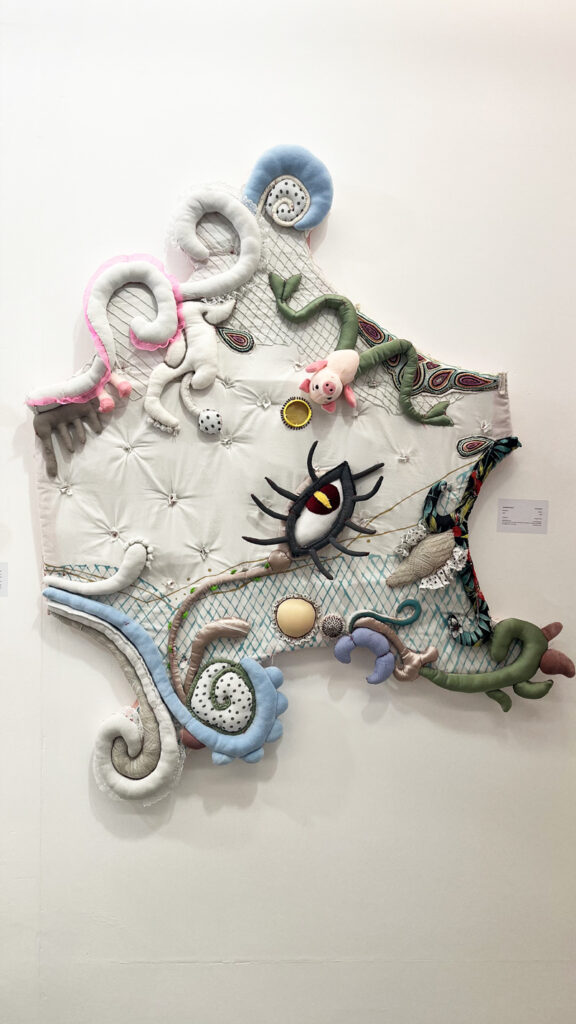
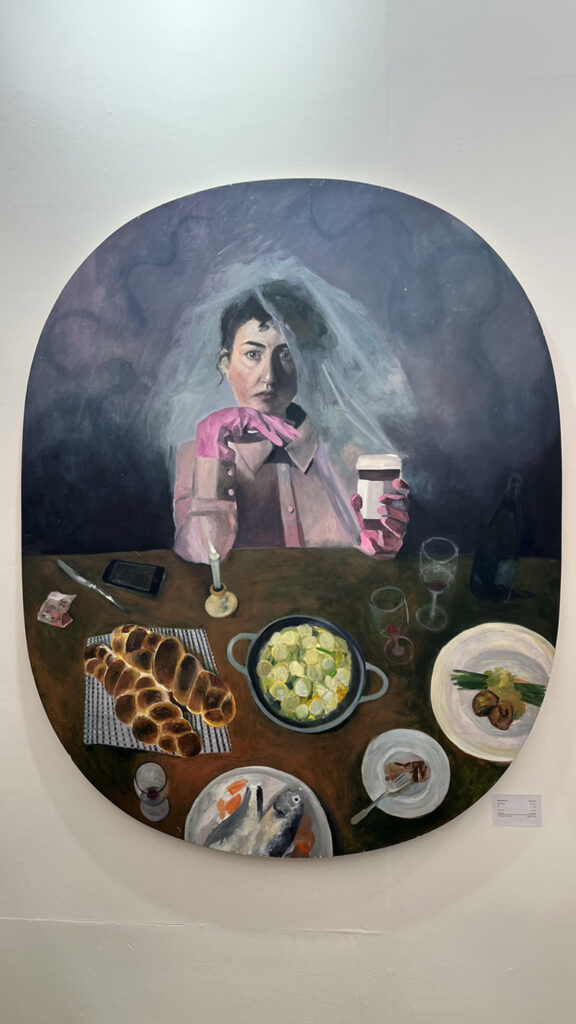
If any of these projects resonate with you, here’s where you can see or purchase works — whether for your personal collection or for your clients’ interiors:
✦ Elia Bloch — solo exhibition now at Ramat Hasharon Contemporary Art Gallery: https://ramat-hasharon.muni.il
✦ Lamps available online: https://eliabloch.cargo.site/lamps-for-sale-heb
✦ Kat Tolkovsky — works: https://www.kattolkovsky.com/art
✦ Elena Rotenberg-Adjoku — paintings: https://elenarotenberg.com/paintings
✦ Yael Pasmanik — Instagram: https://www.instagram.com/yaelpasmanik/
✦ The site of the fair, where you can buy many works: https://www.freshpaint.co.il/freshpaint-presenting-he/
In the next part of this series, we’ll dive into the world of curatorial projects — where artistic statements are brought together in small, focused exhibitions. Stay tuned!
On the cover are the works of artist Noam Zonshine
Contacts:
Instargram Masha Malakh: https://www.instagram.com/malah_ma/